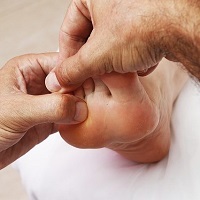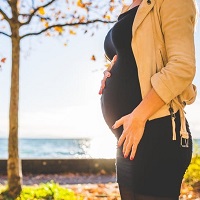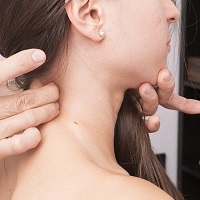 Reflexology healing is a popular and fast growing form of “bodywork” that aims to improve circulation and stimulate the body’s own healing system in order to achieve balance and wellbeing. Our healing systems work best when we are relaxed, so whether you are about to start a course of reflexology treatment, or you have a one-off session booked to give it a try, by reading this article you will know what to expect before, during and after reflexology therapy.
Reflexology healing is a popular and fast growing form of “bodywork” that aims to improve circulation and stimulate the body’s own healing system in order to achieve balance and wellbeing. Our healing systems work best when we are relaxed, so whether you are about to start a course of reflexology treatment, or you have a one-off session booked to give it a try, by reading this article you will know what to expect before, during and after reflexology therapy.
Before the Session…
If you’re travelling to your appointment, plan your route first so you can arrive with a little time to spare rather than rushing about and arriving in a state of stress. If the session is taking place at your home, make sure the environment is suitable i.e. quiet and free from distractions, (don’t forget to switch your phone off), and the temperature should be comfortable. This will help you to achieve a sense of calm so you can enjoy the treatment. Wearing loose, non-restrictive clothing will also help you to relax.
Consultation and Assessment –
Prior to your first session, the therapist will consult with you so they can gain an understanding of your particular needs. Areas they cover will include :
- General health – are you taking any form of medicine, have you had any operations recently, do you have any particular health issues or diseases, is there a family medical history?
- Lifestyle – questions about your diet, do you take any form of exercise, your work – life balance, how do you handle stress?
- Why you have come for treatment – is it for pain relief, recurring health issues, general wellbeing?
Be very honest during this consultation. Firstly, this will help the therapist to gain an understanding of you so they can tailor the treatment to your specific needs. Secondly, under certain circumstances, reflexology may not be suitable for you, for example if you suffer with diabetes or blood clotting. (As mentioned previously, before starting any form of non-conventional treatment or therapy it’s really important to speak to your doctor first. They can advise you whether certain treatments are suitable or not in relation to your current health.)
As part of your initial consultation, your therapist will make it clear that they don’t diagnose particular health issues and that reflexology should not be used instead of conventional medical treatment. You may be asked to sign a consent form or disclaimer before your treatment begins.
The reflexologist will visually assess the area they are to be working on, checking for health indicators such as discoloured skin, rashes, bunions and other conditions. As a matter of courtesy your feet (or other areas) should be clean prior to treatment. Some therapists will bathe your feet in warm water first to aid relaxation.
Towards the end of the consultation, your therapist will tell you a little about reflexology and what to expect from the session. Quite a lot is covered during this initial consultation so allow time for it – usually about half an hour, but confirm with your reflexologist beforehand. If you are returning for a treatment, you will have a shorter consultation to discuss any changes since your previous visit.
Special Note for Expectant Mothers –
 Reflexology can be used to induce labour naturally for overdue pregnancies but there is a great deal of disagreement regarding whether or not it is safe for expectant mothers. Some say definitely not. Some suggest that it’s safe after the first six weeks, others after the first trimester. Alternatively, it’s considered to be safe at any time of pregnancy as long as the therapist is aware and therefore adjusts the treatment relating to the uterine and ovarian reflexes, or avoids them altogether.
Reflexology can be used to induce labour naturally for overdue pregnancies but there is a great deal of disagreement regarding whether or not it is safe for expectant mothers. Some say definitely not. Some suggest that it’s safe after the first six weeks, others after the first trimester. Alternatively, it’s considered to be safe at any time of pregnancy as long as the therapist is aware and therefore adjusts the treatment relating to the uterine and ovarian reflexes, or avoids them altogether.
Obviously, the choice is yours if you are pregnant. Just make sure you have spoken to your doctor first (sorry to go on about this, but it’s really important!) and speak to your reflexologist. Be educated and aware enough to make the right decision for you. I personally received a reflexology therapy at 7 months pregnant and it was a delightful experience.
During the Session…
Make sure you’re comfortable and relaxed. There may be gentle music playing in the background and you will usually be lying down or in a reclining position. It’s fine to talk during the session and if you have any questions don’t be afraid to ask them. However, you may relax more with a comfortable silence. You might in fact fall asleep which is absolutely fine and a good sign that you’re very relaxed!
Your therapist will begin applying pressure to the reflex points in the area to be worked on using specific finger, thumb and hand techniques. It will be a firm pressure but should not hurt. If you do experience pain during reflexology, tell your therapist so they can adjust the pressure to suit you. Likewise, if any areas are particularly sore or tender, make sure they know. The reflexologist may take notes during the session and they may return several times to areas they believe require extra attention.
The therapist might use only foot reflexology, or they may work on a combination of 2 or 3 areas. Here are some points to note about the different areas:
Foot Reflexology
- Remove socks and shoes first
- Foot reflexology points are located on the soles of the feet, tops of the feet, toes, ankles and sides of the feet
- One foot is treated at a time
- This shouldn’t tickle due to the firm application of pressure
Hand Reflexology
- Remove rings, bracelets and your watch prior to the session
- The hand reflexology points are located on the palms of the hands, backs of the hands, fingers, thumbs and wrists
- One hand is treated at a time
- The hand reflex points are deeper so pressure will be harder and applied for longer than on the feet
Face Reflexology
- Remove facial jewellery and glasses prior to the session

- The facial reflexology points are located on all areas of the face
- Some therapists treat reflexes on the neck as well
- It has been claimed, but not proven, that facial reflexology may reduce wrinkles and improve the general appearance of the skin
Ear Reflexology
- Remove earrings and tie long hair back prior to the session
- Ear reflexology points are located on the inner and outside areas of the outer ear
- One ear is treated at a time
- The therapist may use a small, smooth ended stick for areas that are difficult to reach.
During the session you may experience feelings of joy and tranquility, or you may feel the emergence of conflicting emotions. It’s often reported that people can feel some kind of inner “shift” during the treatment. Everyone is different and no two sessions are the same so go with it, relax and enjoy, but be sure to raise any concerns with your therapist.
A reflexology session will usually last between 45 minutes and 1 hour. The therapist will tell you when the session is finished and will give you some time to come round and become grounded once more.
After the Session
Reflexologists usually keep confidential notes which help them to review and plan your next treatment(s). You may have an issue which would benefit from weekly treatments for 6-8 weeks, or a monthly visit might be more suitable as a top up to maintain good health.
As a result of a successful treatment, your body will go through a level of detoxification where toxins are “flushed out” of your system. This can leave the body dehydrated so drink plenty of water and be aware of some possible side effects after reflexology. These include needing the toilet more often, being emotional or moody, feeling tired, feeling energised or improved sleep patterns.
 You may experience all or none of the above. Just know that they are the body’s natural way of healing. For the first few days after your treatment – in order to assist your body further – as far as possible avoid stimulants and depressants such as caffeine, alcohol and nicotine. Eat light meals, drink lots of water and take gentle exercise if you can.
You may experience all or none of the above. Just know that they are the body’s natural way of healing. For the first few days after your treatment – in order to assist your body further – as far as possible avoid stimulants and depressants such as caffeine, alcohol and nicotine. Eat light meals, drink lots of water and take gentle exercise if you can.
Be aware of how you feel during this period and make some notes to discuss at your next session. It may be advisable to wait a couple of days before having any other form of therapy so your body has time to adjust to the reflexology. Again, check with your reflexologist and they will be happy to advise you.
Next Steps…
By learning about what to expect from a reflexology treatment, I hope you are in a better position to decide whether or not it’s for you. Maybe this article has raised further questions, or maybe you have the phone in your hand now, ready to book your first session!
For me personally, reflexology was a very positive and relaxing experience. I hope you enjoy it too – let me know how you get on. As always, questions and comments are welcome below. Want to know more? See What’s the Difference Between Reflexology and Massage?




